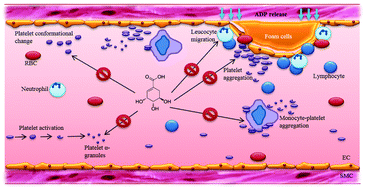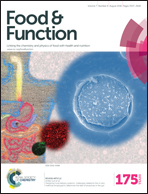Anti-platelet and anti-thrombogenic effects of shikimic acid in sedentary population
Abstract
This ex vivo study was performed to evaluate the anti-platelet and anti-thrombogenic potential of shikimic acid (SA), a plant phenolic metabolite. Fasting blood samples were collected from 22 sedentary participants to analyse the effect of varying concentrations of SA (0.1 mM, 0.2 mM, 0.5 mM, 1 mM and 2 mM) on platelet surface-marker expression, platelet aggregation and biomarkers of thrombogenesis. Monocyte-platelet aggregates (CD14/CD42b) and platelet endothelial cell adhesion molecule-1 (PECAM-1 or CD31), effective indicators of thrombus formation were evaluated. Procaspase-activating compound 1 (PAC-1) and P-selectin or CD62P were used to assess platelet activation-related thrombogenesis. Adenosine diphosphate (ADP) was used to stimulate the P2Y1/P2Y12 pathway of platelet activation to mimic the in vivo thrombogenic pathway. Platelet aggregation studies utilised both ADP and collagen as exogenous platelet agonists to target both P2Y1/P2Y12 and GPVI pathways of thrombus formation. It was observed with flow cytometry that SA produced a significant antiplatelet effect on PAC-1 (p = 0.03 at 2 mM) and CD62P (p = 0.017, p = 0.036 at 1 mM and 2 mM respectively) expression in addition to lowering monocyte-platelet aggregate formation (p = 0.013, p < 0.01 and p < 0.01 at 0.5 mM, 1 mM and 2 mM respectively). SA at 1 mM concentration reduced PECAM-1 expression (p = 0.035), signifying a reduction to endothelial leucocyte migration during thrombus growth. SA did not demonstrate a platelet aggregation inhibitory effect by targeting the GPVI collagen pathway but reduced ADP induced platelet aggregation at 2 mM concentration (p < 0.01 at 2 mM). The results suggest that SA, an active metabolite of polyphenol-rich food intake, could play an important role in reducing platelet activation, aggregation related thrombus formation and biomarkers of thrombogenesis in sedentary individuals.



 Please wait while we load your content...
Please wait while we load your content...